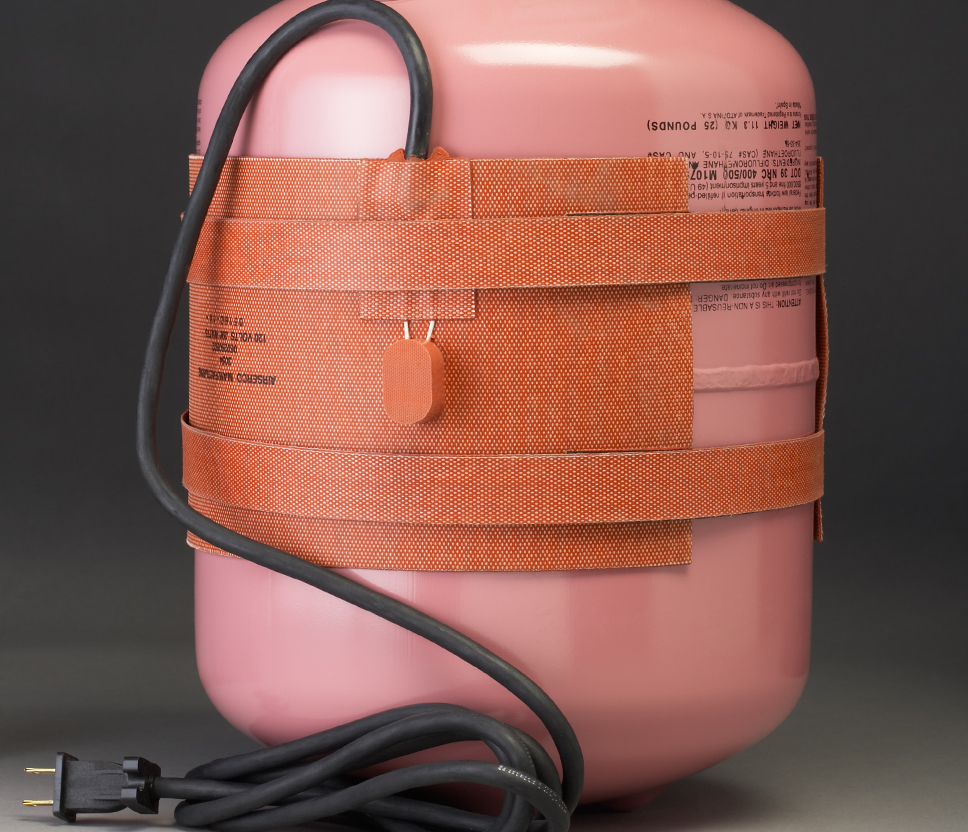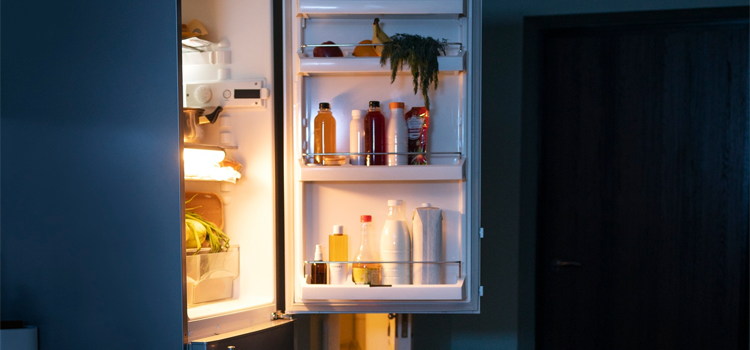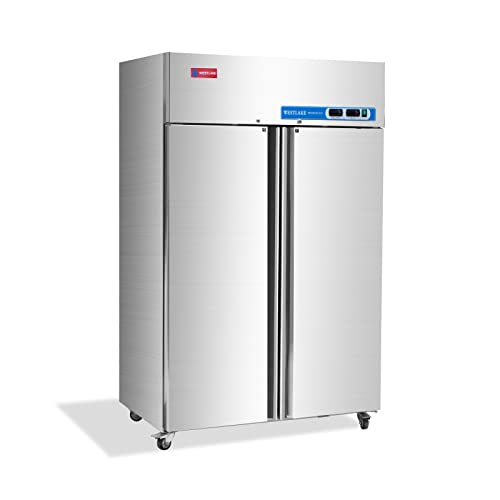The best way to warm a refrigerant cylinder is by placing it in warm water or using a specifically designed heating blanket. Never apply direct flame or excessive heat as it can damage the cylinder or cause safety issues.
Warming a refrigerant cylinder is a critical step in ensuring the proper performance of HVAC systems. As the temperature of refrigerant impacts its pressure, technicians must manage the warming process with precision to maintain the integrity of the cooling cycle.
A controlled approach, often involving immersed warm water, evenly distributes heat and safely raises the refrigerant’s temperature to the desired level. Alternatives like heating blankets are engineered to provide consistent warmth without risking the container’s safety. It’s essential to follow manufacturer guidelines and industry standards while warming the cylinder to avoid overpressure situations or container ruptures, ensuring a safe working environment and effective refrigerant use.

Credit: yellowjacket.com
What Temperature Should Refrigerant Cylinder Be?
Maintaining an optimal refrigerant cylinder temperature is crucial for effective performance, typically around room temperature or slightly warmer. Gently warming the cylinder with a heating blanket or warm water bath ensures proper pressure for efficient charging and recovery operations.
When dealing with refrigerant cylinders, the temperature plays a pivotal role in ensuring safety and efficiency. Whether you’re a professional HVAC technician or a seasoned DIY enthusiast, understanding the optimal temperature for warming a refrigerant cylinder is crucial.
The Optimal Temperature For Refrigerant Cylinders
Keeping refrigerant cylinders at the right temperature is not just a matter of effectiveness; it’s also about adhering to safety standards. Here’s a look at why temperature matters:
- Safety Concerns: Refrigerant cylinders house chemicals under pressure, and when improperly heated, they could lead to hazardous situations. These include the potential for cylinder rupture due to over-pressurization or the release of harmful gases.
- Chemical Stability: Refrigerants have specific temperature ranges at which they stay stable and effective. Exceeding these ranges can lead to a breakdown of the chemical properties, reducing efficiency and possibly causing damage to HVAC systems.
- Optimal Performance: To maintain the high performance of the refrigerant, the cylinder should ideally be kept at a warm, consistent temperature. This ensures the refrigerant is readily available in a gaseous state for efficient transfer and charging.
The consensus in the industry is that a refrigerant cylinder should be maintained at a stable temperature, generally around ambient temperature but not exceeding 125°F (51°C). This range helps prevent the risks associated with too low or too high temperatures, ensuring a balance between safety and functionality.
Practical Considerations For Warming Refrigerant Cylinders
To properly maintain the temperature of a refrigerant cylinder, consider these practical tips:
- Proper Equipment: Use a thermostat-controlled heating blanket specifically designed for refrigerant cylinders. This ensures even heating and prevents hot spots that could damage the cylinder or alter the refrigerant.
- Indoor Storage: Keep cylinders in a climate-controlled environment to avoid extreme temperatures. Indoor storage reduces the risk of exposure to severe cold or heat that could necessitate excessive warming.
Maintaining the optimal temperature is a smart and necessary practice for managing refrigerant cylinders effectively. Whether in storage or in use, applying these guidelines will promote safety and ensure that your HVAC systems operate seamlessly.
How Does Refrigerant Heat?
To effectively warm a refrigerant cylinder, employ a gradual heating method, such as a warm water bath. This technique ensures uniform temperature distribution, preventing cylinder damage and ensuring the refrigerant’s optimal performance.
Knowing the most effective way to warm a refrigerant cylinder is essential for HVAC professionals and enthusiasts alike. A properly warmed cylinder ensures optimal pressure for the refrigerant, which directly affects the efficiency and reliability of the cooling system. Let’s dive into how the refrigerant actually absorbs heat and the best practices for promoting this critical process.
Understanding The Physics Of Refrigerant Heat Absorption
Refrigerants have a unique ability to absorb and release heat at various temperatures and pressures, playing a pivotal role in the refrigeration cycle. As the refrigerant moves through the system, it undergoes phase changes between liquid and gas, a process highly dependent on temperature.
Effective Methods To Warm A Refrigerant Cylinder
Knowing how a refrigerant works, let’s look at how to correctly warm a cylinder:
- Use a Warm Water Bath: Immersing the cylinder in warm (not hot) water can evenly distribute heat without damaging the refrigerant.
- Employ a Cylinder Heater Blanket: This ensures consistent and safe warming while preventing any hot spots that could compromise the integrity of the cylinder.
By following these suggestions, you can maintain the refrigerant at its optimal condition, ensuring that your cooling system runs smoothly and effectively. Remember, consistent and appropriate warming of the refrigerant not only boosts efficiency but also prolongs the lifespan of your equipment.
What Is The Maximum Safe Storage Temperature For Refrigerant Cylinders?
Ensuring refrigerant cylinders are safely warmed is crucial for optimal performance. Generally, the maximum storage temperature for these cylinders should not exceed 120°F (49°C) to prevent compromising their integrity and safety.
Understanding the optimal storage conditions for refrigerant cylinders is essential for maintaining safety and ensuring the effectiveness of HVAC systems. Let’s delve into the particulars surrounding the maximum safe storage temperature for these cylinders.
It is crucial to adhere to specific guidelines when storing refrigerant cylinders to prevent accidents or degradation of the refrigerant. The temperature threshold plays a pivotal role in this context:
- Safe Storage Range: The ideal storage temperature for refrigerant cylinders typically falls well below the cylinder’s test pressure threshold; this aligns with the refrigerant manufacturer’s safety standards and recommendations.
- Maximum Threshold: The maximum safe storage temperature for most refrigerant cylinders is generally around 120°F (49°C), a standard adopted for safety based on the chemical properties of common refrigerants.
- Pressure Considerations: As the ambient temperature rises, the pressure inside the cylinder can increase, leading to potential ruptures if the maximum safe temperature is exceeded.
- Label Review: Always refer to the labeling on the cylinder itself; manufacturers will specify maximum storage temperatures based on the particular type of refrigerant and cylinder design.
- Regulatory Compliance: Beyond manufacturer’s guidelines, it’s imperative to comply with local regulations and codes which may dictate specific temperature parameters for the safe storage of refrigerant cylinders.
Remembering to monitor not just the temperature but also the broader storage conditions of your refrigerant cylinders is a key aspect of responsible and safe HVAC management. Maintaining parameters within recommended limits not only follows best practices but also aligns with safety and operational excellence.
What Happens When Freon Is Heated?
Heating Freon causes it to expand and transition from a liquid to a gas, a critical step in refrigeration cycles. The optimal method to warm a refrigerant cylinder involves using a warm water bath to ensure even and controlled heating, preventing any damage to the cylinder.
Warming a refrigerant cylinder is crucial for effective and safe HVAC operation. The bottle must reach a suitable temperature to maintain the pressure needed for proper refrigerant release and charging. Now, let’s explore what happens when Freon, a common term that refers to certain types of refrigerants, is subjected to heat.
Thermal Expansion Of Freon
When Freon is heated, a series of events unfold that impact its usability in HVAC systems:
- Increased pressure: As the temperature rises, the pressure within the cylinder also increases.
- Changes in state: Freon can transition from liquid to gas as it absorbs heat, potentially causing overfilling if not monitored.
- Safety risks: Excessive heating may lead to cylinder failure or rupture, posing serious safety hazards.
Proper Techniques For Heating A Refrigerant Cylinder
Employing the correct method to warm up a refrigerant cylinder is key:
- Gradual heating: Apply a gentle heat source to avoid rapid pressure increases that could damage the cylinder.
- Monitoring: Regularly check the temperature and pressure to prevent unsafe conditions.
- Tools and equipment: Use only approved heating blankets or warm water baths designed for refrigerant cylinders, not open flames or other direct heat sources.
By understanding these factors, HVAC technicians can ensure they handle Freon with the care and precision required to maintain optimal system performance and safety.
Which Way Does Refrigerant Flow In Heating Mode?
Warming a refrigerant cylinder optimizes performance, especially during the heating mode when refrigerant flows from the outdoor coil to the indoor unit. Safely heating the cylinder to the proper temperature ensures efficient refrigerant flow and maximizes heat output.
Understanding Refrigerant Flow In Heating Mode
When a system enters heating mode, the refrigerant takes on a crucial role in transporting heat. The flow of refrigerant is not as intuitive as it might seem. Contrary to what one might expect, the flow reverses depending on the mode of operation of the heat pump.
The Direction Of Refrigerant Flow:
Before diving into the specifics of warming a refrigerant cylinder, it’s vital to grasp how refrigerant circulates during the heating cycle. This understanding will lend insight into proper cylinder warming techniques.
- Direction of Flow:
The refrigerant flows from the compressor to the outdoor coil, which acts as the evaporator in heating mode.
- Heat Absorption and Release:
Outside air passes over the coil, transferring its heat to the refrigerant. The now-warmed refrigerant carries the heat indoors.
Let’s explore the path the refrigerant travels in a typical heat pump during the heating phase. Starting its journey in the compressor, the refrigerant exits pressurized and enters the outdoor coils. Here, it encounters colder external air, absorbs heat, and subsequently brings this energy inside.
This heat transfer is fundamental to warming up your living spaces during colder months.
Remembering the flow’s direction is crucial in heating mode since it directly impacts efficiency and ensures the right approach when it comes time to warm the refrigerant cylinder.
Why Does Refrigerant Need To Boil?
Refrigerant needs to boil within a warming cylinder to ensure it transitions from a liquid to a gas, effectively enabling heat absorption. Proper boiling ensures the refrigeration cycle operates at peak efficiency for cooling systems.
Warming up a refrigerant cylinder is not just a matter of procedure; it’s an essential step for ensuring the proper performance of HVAC systems. A well-maintained and correctly heated refrigerant cylinder can make the difference between an efficient cooling system and one that falls short of expectations.
When delving into the physics of refrigerants, their boiling point is pivotal to cooling mechanisms. Let’s unpack the reasons behind the necessity for refrigerants to undergo a boiling process:
- Pressure-temperature relationship: As the refrigerant boils, it transforms from a liquid into a gas within the HVAC system, a transition governed by the pressure-temperature relationship. The boiling point changes with pressure, and manipulating this factor is what allows the refrigerant to absorb heat from the environment.
- Latent heat: A refrigerant’s ability to boil at lower temperatures enables it to absorb latent heat during the phase change. This is the heat absorbed or released when the refrigerant transitions between liquid and gas without changing temperature, which is fundamental for the air conditioning process.
- Thermal energy transfer: Effective boiling of the refrigerant ensures that it can carry a significant amount of thermal energy. This quality is crucial because the refrigerant’s main task within an HVAC system is to transfer heat from the inside of a building to the outside.
Optimizing the performance of a refrigerant starts with a clear understanding of its thermodynamic properties. As with any substance, the refrigerant must receive sufficient energy to break the intermolecular forces that keep it in a liquid state, enabling the shift to gas.
By ensuring the correct boiling circumstances, we pave the way for seamless thermal exchange, which lies at the heart of modern cooling systems.
Focusing on the unique properties of refrigerants and their significance in heat transfer helps in grasping the importance of a well-boiled refrigerant. As such, the proper management of refrigerant cylinders is more than just a technicality; it becomes a fundamental aspect of efficient climate control.
Best Practices For Warming A Refrigerant Cylinder
The approach taken to warm a refrigerant cylinder should be measured and deliberate. Here are the best practices to consider:
- Gradual heating: A gentle approach is essential to avoid compromising the integrity of the cylinder or the refrigerant. It ensures that the refrigerant warms evenly, preventing hot spots that could lead to overpressure situations.
- Use of ambient temperature: Leveraging the ambient temperature to assist in the warming process can be a safer method. Storing cylinders in a moderately warm environment aids in maintaining an optimal starting temperature.
- Thermostatically controlled blankets: Employing a thermostatically controlled heating blanket is one of the most efficient and secure methods. It delivers an even distribution of heat and keeps the temperature within the safe range recommended by the refrigerant manufacturer.
- Monitoring pressure levels: Keeping a vigilant eye on the pressure gauge can prevent dangerous overpressure conditions. It’s crucial that the pressure doesn’t exceed the cylinder’s designated maximum to ensure safety.
These steps, when followed carefully, not only enhance the effectiveness of the refrigerant but also guard against potential hazards. Remember that each refrigerant type may have unique requirements, and always consult manufacturer guidelines to ascertain the correct warming methods.
Engaging with HVAC professionals and ensuring adherence to industry best practices culminates in superior operation of cooling systems. Armed with this knowledge, one can appreciate the nuances of refrigerant management and the importance of precise cylinder warming techniques.
What Is The Safe Handling Of Refrigerant Cylinders?
Proper warming of refrigerant cylinders ensures safety and efficiency during use. Utilize a gradual warming technique with ambient temperature water—never direct heat—to avoid compromising the cylinder’s integrity and maintain compliance with handling protocols.
Warming a refrigerant cylinder correctly is crucial for both efficiency and safety within various industrial and HVAC applications. So, let’s walk through the fundamentals of safely handling these cylinders to ensure you’re up to speed with best practices.
Understanding The Pressure-temperature Relationship
Before diving into the processes of warming a refrigerant cylinder, grasping the underlying principles is necessary. A refrigerant cylinder contains gases that respond predictably to changes in temperature and pressure. As the temperature increases, pressure within the cylinder will also rise.
It’s this pressure-temperature relationship that technicians manipulate to safely use refrigerants.
Proper Storage Of Refrigerant Cylinders
It’s essential to store refrigerant cylinders upright and in a cool, well-ventilated area to prevent accidental pressure build-up and potential hazards:
- Upright Position: Ensures the gas and liquid within the cylinder do not mix, maintaining consistent pressure.
- Cool Environment: Minimizes temperature fluctuations and avoids any unnecessary increase in cylinder pressure.
- Good Ventilation: Prevents the buildup of gas in case of a leak, which can be a health and fire risk.
Handling Refrigerant Cylinders With Care
Handling your cylinders with consideration is just as important as how you warm them:
- Physical Handling: Always use proper lifting techniques to move cylinders. Secure them appropriately during transport to prevent falls or damage.
- Securing Caps: When not in use, ensure that protective caps and valves are securely fastened to avoid leaks.
- Regular Inspections: Check cylinders for signs of rust, dents, or other damage, as these can compromise the integrity of the container.
The Right Equipment For Warming
When it’s time to warm a refrigerant cylinder, opting for the right tools can make all the difference:
- Approved Warmers: Utilize purpose-designed cylinder warmers to evenly and safely increase the temperature.
- Monitoring Devices: Attach pressure gauges and temperature sensors to keep a reliable track of the cylinder’s condition.
Avoiding Direct Heat Sources
The safety of the warming process is paramount, and certain methods can put you at risk:
- No Open Flames: Never use an open flame or any type of direct fire to warm a refrigerant cylinder.
- Steer Clear of Radiant Heaters: Radiant heaters can cause uneven heating and localized hotspots, resulting in dangerous pressure differences.
Remember, ensuring the safe handling of refrigerant cylinders should always be your primary concern. By following these best practices, you’ll not only take care of your equipment but also prioritize everyone’s safety in the vicinity. Stay informed, stay safe, and maintain efficiency by handling your refrigerant cylinders wisely.
What Is The Maximum Temperature For R134a Refrigerant?
Understanding the limits of R134a refrigerant is crucial for safe handling; its maximum temperature reaches 115. 7°C (240. 26°F) under atmospheric pressure. Properly warming a refrigerant cylinder ensures effective gas release without compromising safety or performance.
Understanding The Maximum Temperature For R134a Refrigerant
Managing the temperature of R134a refrigerant is crucial for safe and efficient operation. Known as a hydrofluorocarbon used predominantly in automotive and domestic air conditioning systems, R134a has a chemical stability that makes it less flammable at standard temperatures. But when it comes to warming the refrigerant, recognizing and adhering to the recommended temperature limits is vital.
Best Practices For Heating A Refrigerant Cylinder
Before diving into the best methods to warm a refrigerant cylinder, it’s essential to comprehend the temperature guidelines:
- Maximum allowable temperature: This is the highest temperature at which the refrigerant can be stored or used without risking the integrity of the cylinder or the refrigerant’s efficacy. For R134a, this threshold is typically expected to be around 125 degrees Fahrenheit (51.7 degrees Celsius). Exceeding this temperature can result in increased pressure within the cylinder, potentially leading to a dangerous situation.
- Service application temperatures: In operational scenarios, R134a is often used within a specific range of temperatures that ensure optimal performance. These temperatures usually fall well below the maximum allowable limit.
- Temperature during diagnostic procedures: When HVAC technicians perform system diagnostics, they must make sure that R134a is within the appropriate temperature range to accurately gauge system performance. Keeping the refrigerant at the recommended temperatures is crucial during these procedures.
Heating Options For Refrigerant Cylinders
Ensuring R134a is at the correct temperature can involve several heating methods. Let’s explore a couple of options:
- Water baths: A common and controlled method to heat refrigerant cylinders is to use a warm water bath. Submerging the cylinder in water that is below the maximum recommended temperature can evenly increase its warmth. It’s a preferred method due to the gentle and consistent heating it provides.
- Specialized heating belts: There are heating devices designed specifically for refrigerant cylinders. These heating belts wrap around the cylinder and gradually warm the refrigerant to the desired temperature. The advantage is that they are built to prevent overheating, often have thermostatic controls, and are relatively easy to use.
Safety Measures When Warming Refrigerant Cylinders
Safety should never be an afterthought when dealing with refrigerants. Here is what you need to keep top of mind:
- Regularly monitor cylinder temperature: It’s key to continuously check the temperature of the cylinder while it’s being warmed. Use reliable thermometers or temperature gauges to avoid surpassing the R134a’s max temperature.
- Proper ventilation: Work in well-ventilated spaces to minimize the risk of exposure to gas leaks during heating, which can be hazardous to health and safety.
- Compliance with safety standards: Follow all relevant safety guidelines and regulations when handling and warming refrigerant cylinders to protect yourself and those around you.
Employing the right warming techniques while maintaining the specified safety measures ensures that R134a refrigerant is used effectively and remains within the operationally secure temperature range. Remember to use the appropriate equipment and always prioritize safety when managing refrigerants.
What Is The Critical Temperature Of R134a?
Understanding the critical temperature of R134a, which is 101. 06°C (213. 9°F), is pivotal when determining how to safely warm a refrigerant cylinder. Properly heating refrigerant cylinders avoids surpassing this temperature to ensure the integrity of the gas and container.
Finding the right way to manage refrigerants, such as R134a, is pivotal for HVAC professionals and enthusiasts. One key characteristic of this substance is its critical temperature, a threshold with significant implications for heating and cooling applications.
R134a, or Tetrafluoroethane, is a hydrofluorocarbon (HFC) known for its high cooling capacity and widespread use as a refrigerant in automotive and domestic environments. The critical temperature is a point above which a substance can’t exist in a liquid state, no matter the pressure applied.
For R134a, understanding this parameter is essential for efficient and safe operation.
The Importance Of R134a’s Critical Temperature In Warming Cylinders
- Determining the Safe Warming Threshold:
The critical temperature for R134a is pivotal when warming refrigerant cylinders. Technicians must ensure that the heating process does not exceed this vital thermal cap to avoid creating dangerous high-pressure scenarios that could lead to cylinder rupture or failure.
- Maximizing Efficiency:
Operations stay efficient when the R134a is kept below its critical temperature of approximately 101. 06°C (214°F). This allows the refrigerant to absorb maximum heat before transforming from a liquid to a gas, ensuring the most effective cooling cycle within the system.
- Guiding Refrigerant Handling Practices:
Each refrigerant comes with specific handling guidelines. Knowing the critical temperature of R134a reinforces safe and methodical management, suggesting the use of temperature-controlled water baths or specially designed warming blankets to cozy up the cylinders just the right amount, without breaching that all-important threshold.
Tips For Safely Heating A Refrigerant Cylinder
Properly warming a refrigerant cylinder requires meticulous attention to detail. By adhering to several best practices, you can ensure both the safety and the efficacy of the warming process.
- Use Appropriate Equipment:
Devices like heating belts and water baths are engineered to evenly distribute heat, preventing hotspots that could lead to surpassing R134a’s critical temperature.
- Monitor Temperatures Closely:
Precision is key—employ reliable thermometers or temperature sensors to keep a watchful eye on your cylinder’s warmth, safeguarding against accidental overheating.
- Follow Manufacturer Instructions:
Every cylinder comes with a manual or a set of guidelines. Stick to these recommendations strictly to maintain operational safety and longevity of your equipment.
Managing refrigerants like R134a demands not only technical know-how but also a conscientious approach that respects the intricate properties of these substances. Understanding and adhering to the critical temperature of R134a is just one vital component of this multifaceted procedure.
By combining this knowledge with a careful, attentive warming methodology, one can achieve optimal results that tick all the boxes for effectiveness and safety.
:max_bytes(150000):strip_icc()/GettyImages-1358832082-a405a9938ee047dfbe73bae345a2c355.jpg)
Credit: www.treehugger.com
Frequently Asked Questions On What Is The Best Way To Warm A Refrigerant Cylinder
What Temperature Should Refrigerant Cylinder Be?
Store refrigerant cylinders at a temperature below 125°F (52°C) in a well-ventilated area. Avoid direct sunlight to maintain safety and the integrity of the refrigerant.
What Happens When Freon Is Heated?
When heated, Freon expands and transitions into a gas. This process involves energy absorption and is fundamental to refrigeration and air conditioning systems.
How Do You Transport Refrigerant Cylinders?
Ensure refrigerant cylinders remain upright during transport. Secure them to prevent falls or rolling. Use a cart or hand truck for safe handling. Protect cylinders from direct sunlight and inclement weather. Follow Department of Transportation (DOT) regulations for transport.
What Precautions Should Be Taken When Handling Refrigerant Cylinders?
Ensure refrigerant cylinders are upright during storage and use. Always wear protective gloves and eyewear. Follow manufacturer guidelines for safe handling. Avoid exposure to open flames or high temperatures. Ventilate the area to prevent gas accumulation.
Conclusion
Properly warming a refrigerant cylinder is crucial for efficient and safe HVAC operation. Employing the right method can prevent costly waste and accidents. Remember, gentle and uniform heating is key. By choosing an appropriate warming technique, you ensure optimal performance and longevity for your refrigerant.
Stay safe and efficient in your HVAC maintenance tasks.



